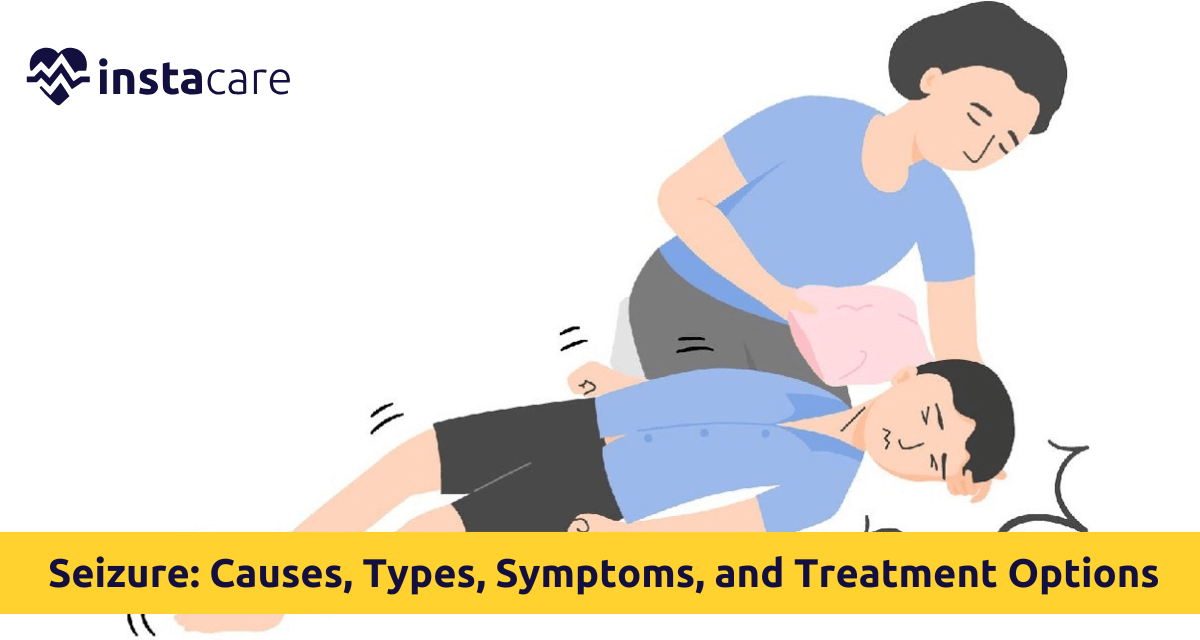Seizures are sudden and most usually instant sparks of electricity into the brain. The shocks may contaminate one's behavior, motion, thought, or feeling and, in some instances, result in loss of consciousness. Seizures may be minute or grand and second-long or minute-long and, while others get one seizure a lifetime, others constantly seize again and again, so-called Epileptic seizure.
What is a Seizure?
Seizure is a result of abnormally and abnormally occurring electric brain activity. Activity can be described in an enormously broad range of physical, emotional, and mental symptoms. Seizure can be so slight that it is no reaction or as extreme as full convulsions and loss of awareness depending on where the seizure happens in the brain.
Types of Seizures
Seizures are broadly divided into focal seizures (of a brain region) and generalized seizures (extended to whole brain).
1. Focal (Partial) Seizures
These start in a region of the brain and might or might not involve loss of consciousness.
- Focal Aware Seizures (Simple Partial Seizures): The patient is not confused. They have symptoms ranging from abnormal smell or taste to arm or leg movement or change in sensation such as fear or terror.
- Focal Impaired Awareness Seizures (Complex Partial Seizures): A change or disturbance of consciousness. The patient might be performing repetitive action (hand rubbing, chewing, walking), etc.
Focal seizures can become generalized to generalized seizures with overlapping spread of abnormality to the both hemispheres of the brain.
2. Generalized Seizures
They affect both brains and usually cause loss of consciousness.
- Tonic-Clonic Seizures (Grand Mal): Most frequent, experience stiffening of body (tonic), followed by jerking randomly (clonic). Also experience tongue biting, incontinence of bladder, and confusion on recovery from seizure.
- Absence Seizures (Petit Mal): Most frequent Seizure in children, brief loss of consciousness, staring spells, and blinking or lip-smacking.
- Myoclonic Seizures: They produce abrupt sudden jerk of muscle experienced as shuddering or twitching.
- Atonic Seizures (Drop Attacks): Muscle weakness, leading the person to drop and injure themselves.
- Tonic Seizures: Sudden stiffening of muscles, typically in legs and back, typically at night.
- Clonic Seizures: Repeated jerking of muscles of one or both sides of the body.
Having knowledge about the type of seizure makes it make treatment and management plan to use more definite.
Some Major Seizure Symptoms
Seizure behavior varies with site and seizure of brain but most frequently are:
- Sudden confusion or unresponsiveness
- Spontaneous jerking of limb and arm
- Flexion or rigidity or bending of body in the arm
- Sudden loss of consciousness
- Eyelid fluttering or vacant staring
- Smacking lips or reduplication of other behavioral habits
- Sudden horror or fear or terror, feeling of deja vu
- Sudden slumping
- Losses of unspecified cause
- Abnormal perception like tingling or visual distortion
It is not so common in others, and more common in focal seizures, where symptoms are not precisely there. All such individuals who share the same repeating symptoms are required to diagnose correctly.
Different Causes of Seizures
Some Condition causes seizure. These conditions maybe of the brain or body. Its most common etiologic states are:
1. Neurological disorders
- Most common chronic state being epilepsy.
- It is also due to brain tumours, stroke, or trauma.
2. Infectious Diseases
Meningitis, encephalitis, and HIV infection may lead to brain infection or inflammation causing seizures.
3. Metabolic Abnormalities
Abnormality in the regulation of sodium, calcium, glucose, or magnesium may affect the functioning of the brain.
4. High Temperature
Children's febrile seizures are usually most commonly seen at peaks of fever between the age of 6 months and 5 years.
5. Genetic Disorders
Certain epilepsies are genetic in nature and were caused by mutations that occurred in the genes responsible for carrying the messages of the brain.
6. Drug Addiction or Withdrawal
Alcohol, cocaine, and some drugs can be capable of inducing seizures, particularly on withdrawal.
7. Sleep Deprivation
Economic or disturbed sleep patterns can have the potential of reducing the seizure threshold in epilepsy patients.
What Does Seizure Diagnosis Involve?
A correct diagnosis begins with nearly literally a series of steps, which begin with a thorough history and symptoms assessment of the patient.
1. Medical History
There. A thorough history of the seizures, precipitants, duration, symptoms, and family history.
2. Neurological Examination.
To evaluate cognitive function, motor function, and coordination.
3. Electroencephalogram (EEG).
Pain-free, low-cost testing of the brain's function and most helpful test for diagnosis of epilepsy. Can identify abnormal brain waves between seizures.
4. Brain Imaging
MRI or CT scans are utilized to locate structural abnormalities like tumors, hemorrhage, or scarring.
Spect or PET scans are utilized in complicated cases.
5. Blood Tests
They are utilized in the diagnosis of metabolic infection or imbalance that provokes seizures.
6. Video-EEG Monitoring
The patients are taken in and video and EEG monitored, even for days, in order to allow real-time recording and analysis of seizures.
Some Seizure Treatment Options
Here is a general overview of seizure treatment alternatives:
Drugs (AEDs):
- Typical drugs like carbamazepine, valproate, levetiracetam, lamotrigine, phenytoin.
- Need to be taken daily with side effect management.
- Suppress seizures in approximately 70% of epilepsy patients.
Surgery:
- For drug-refractory focal seizures.
- Is comprised of resective surgery, hemispherectomy, and corpus callosotomy (typically in serious childhood cases).
Vagus Nerve Stimulation (VNS):
Device is implanted that transmits electrical impulses to suppress seizure activity.
Responsive Neurostimulation (RNS):
Skull implant senses abnormal activity and discharges focussed electrical pulses.
Dietary Therapies:
- Ketogenic diet (high fat, low carbohydrate) in treatment-resistant childhood epilepsy.
- Modified Atkins and low glycemic index diets also employed.
Lifestyle Changes:
- Steer clear of triggers like flashing lights, alcohol, sleep deprivation.
- Obtain sufficient sleep, hydration, and stress reduction (e.g., yoga, meditation).
Psychological Counseling:
Assists with coping with emotional stress, depression, or anxiety surrounding seizures.
Seizure Prevention Methods
Prevention of seizures is an example of controlling known precipitating causes and a good way of life. The main methods are:
- Take medicines as advised by your physician.
- Healthy sleep to prevent seizures due to fatigue.
- Avoireducesd glare from lights or stress, if these are identified precipitating causes.
- Restrict alcohol and drug use, which reduce the seizure threshold.
- Control medical illnesses such as diabetes or infection at an early stage.
- Eat nutritious food and plenty of water to keep metabolic imbalances away.
- Maintain a seizure diary in order to determine and avoid personal seizure triggers.
These habits can decrease the number of seizures and make life much easier.
Conclusion
Seizures are terrifying, but, if one receives the correct diagnosis and treatment, most can lead normal, productive lives. The trick is to figure out what kind of seizure one is experiencing and why one is experiencing it and call a physician and arrange a treatment schedule which is as individualized as one's requirements.
Please book an appointment with the
best Neurologist in Lahore, Karachi, Islamabad, and all major cities of Pakistan through
InstaCare, or call our helpline at 03171777509 to find the verified doctor for your disease.

